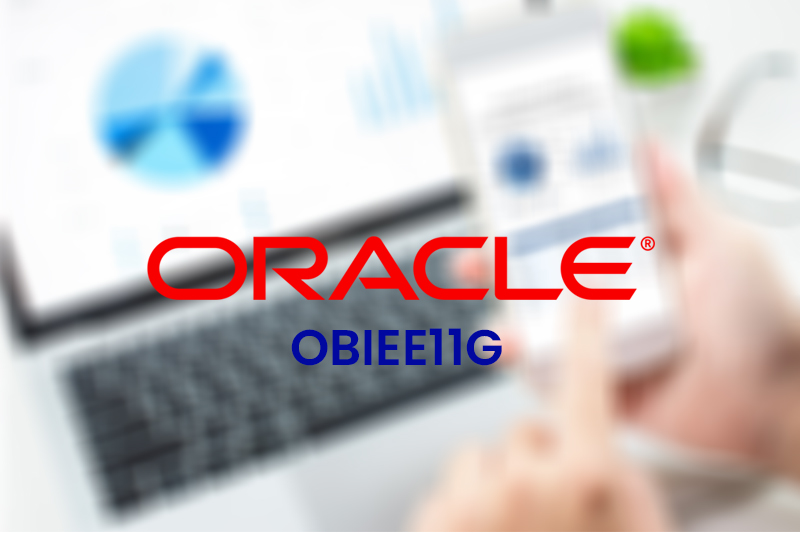OBIEE11G

OBIEE11G COURSE CONTENT
Data Warehouse concepts
- 1. What is Data
- 2. Types of Data
- 3. Types of Databases
- 4. What is Data Warehouse?
- 5. Data Warehouse Architecture
- 6. Difference between OLTP Vs OLAP
- 7. Types of Columns
- 8. Types of Tables
- 9. What is schema and types of Schemas
- 10. Difference between Star and Snow Flake Schemas
OBIEE Introduction :
- 1. Why Oracle BI ?
- 2. What is Oracle BI?
- 3. History of Oracle BI
- 4. Oracle BI architecture 11G
OBIEE 11G 1ST LEVEL
Administration
- 1. Repository Basics
- 2. Building the Physical Layer of a Repository
- 3. Building the BMM Layer of a Repository
- 4. Building the Presentation Layer of a Repository
- 5. Testing Repository
- 6. Working with Multiple Logical Table Sources
- 7. Adding Calculations to Fact Table
- 8. Creating Dimensional Hierarchies& Level based measures
OBIEE 11G 11ND LEVEL
- Presentation Services or Analytics
- 1. Introduction to Presentation Services
- 2. What is Web Catalog & Instanceconfig.xml
- 3. Difference between Shared Folders & My Folders
- Answers
- 1. Working with OBI Answers
- 2. OBI Column Properties
- 3. Style ,Column Format ,Data Format , Conditional Format ,Intraction and Write Back
- 4. Hide Column
- 5. Edit Formulas / Report level Calculations
- 6. Filters
- 7. Column ,image and Variable Prompts
- 8. Sorting of Columns
- 9. OBI 17 Views
- 10. Combining With Similar Request
- 11. Direct Database Requests
- Dashboards
- 1. Creating Oracle Business Intelligence Interactive Dashboards
- 2. Working With Dashboard Objects
- 3. Column , Section ,Link or Image ,Embedded Content ,Text, Folder, Action Link ,Action Link Menu ,Alert Section
- 4. Hiding or showing Section Dynamically based on condition
- 5. Working With Dashboard Prompts
- 6. Column ,Image and Variable Dashboard Prompts
- 7. Presentation Variables
- 8. Request Variable
- Delivers
- 1. Introduction to Oracle BI Delivers
- 2. Oracle BI Deliveries Tables
- 3. Configuring delivery devices
- 4. Adding delivery profiles
- 5. Developing Agents
- 6. Building Alerts
- 7. Creating Agents Based on Time
- 8. Creating Agents Based on Time and Condition
- 9. Creating Chain of Agents
- Job Manager
- 1. Monitoring Agents
- Oracle BI for Microsoft Office
- 1. Introduction to Oracle BI for Microsoft Office
- 2. Installation of Oracle BI for MS Office
- 3. Accessing OBI reports in MS Excel
- 4. Accessing OBI Reports in MS Power Point
- Catalog Manager
- 1. Deploying Dev to test or test to prod
- 2. Deploying in Offline or Online Mode
- 3. Catalog Back Up and Restore
- 4. Providing Permissions
- 5. Documentation of Web Catalog
OBIEE 11G 111 rd LEVEL
- 1. Using Aggregate Tables
- 2. Using Partitions and Fragments
- a. Value Based
- b. Fact Based
- c. Level Based
- 3. Variables
- a. Static Repository
- b. Dynamic Repository
- c. Repository Initialization Blocks
- d. System Session
- e. Non System Session
- f. Session Initialization Blocks
- g. Row Wise Initialization Blocks
- h. Presentation Variables
- i. Request Variables
- 4. Time Series Functions
- a. AGO
- b. TODATE
- c. PERIODROLLING
- 5. Configuring Many To Many Relationships
- a. Bridge Table
- b. Helper Table
- 6. Deploying Oracle Bi application to multiple countries
- a. Localizing Oracle BI Metadata
- b. Localizing Oracle BI Data
- 7. Setting Implicit Fact Column
- 8. Third Party Reporting Tool Integration
- 9. Creating Repositories From Multi dimensional Data Sources
- 10. Security
- a. Authentication
- i. LDAP
- ii. External Table
- b. Authorization
- i. Object Level
- a. RPD
- b. Web Catalog
- ii. Data / Row Level
- i. Object Level
- a. Authentication
- 11. Administering Usage Tracking
- 12. Multi-User Development Environment (MUDE)
- 13. Utilities
- 14. Cache Management
- 15. Optimizing Query Performance
- 16. Cluster Servers
- 17. Alias ,Circular Joins & Opaque Views or Select Tables
OBIEE 11 G Advanced New Features
- 1. Introduction about EM, CONSOLE, ANALYTICS, XMLPSERVER..etc
- 2. Parent Child Hierarchies
- 3. Unbalanced Hierarchies
- a. Ragged Hierarchies
- b. Skipped Hierarchies
- 4. Hierarchical Columns and Selection Steps
- 5. Action Links
- 6. Creating Simple Action Links
- 7. Creating Advanced Action Links
- 8. Master Detail Reports
- 9. Creating KPI
- 10. Creating KPI Watch List
- 11. Creating Scorecards
- 12. Assign ID columns to descriptive columns
- 13. Using Lookup Table
- 14. Horizontal Federation
- 15. Vertical Federation
- 16. Combined Horizontal & Vertical Federation
Deployment
- 1. Moving RPD and Web Catalog from Development server to Testing Server
- 2. Moving RPD and Web Catalog from Testing Server to Production Server
Migration
- 1. Under Standing Pre Migration Process
- 2. Understanding Upgrade Assistant Wizard
- 3. Migrating from OBIEE 10G to OBIEE 11G
- 4. Under Standing Post Migration Proces
